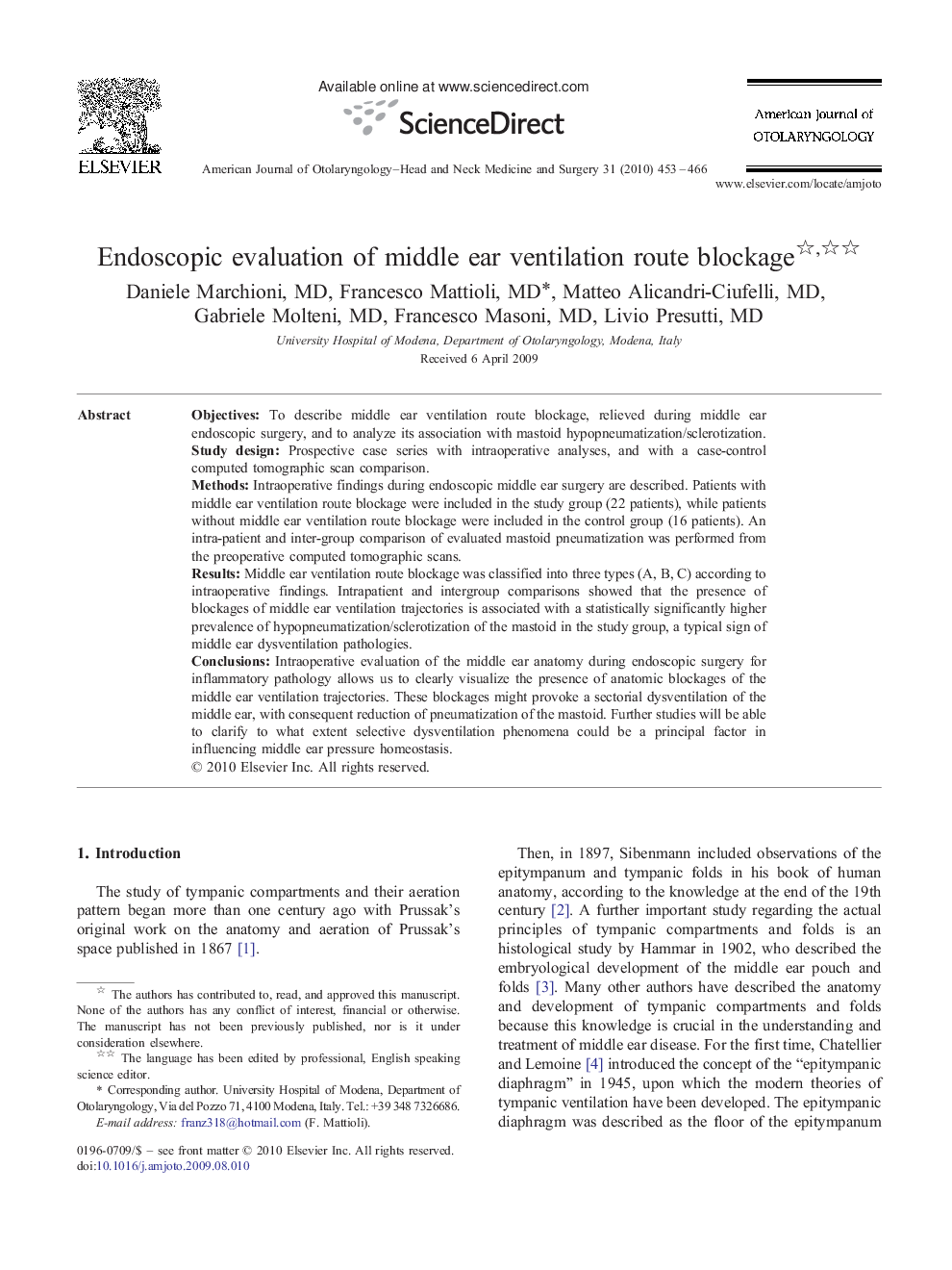| Article ID | Journal | Published Year | Pages | File Type |
|---|---|---|---|---|
| 4104059 | American Journal of Otolaryngology | 2010 | 14 Pages |
ObjectivesTo describe middle ear ventilation route blockage, relieved during middle ear endoscopic surgery, and to analyze its association with mastoid hypopneumatization/sclerotization.Study designProspective case series with intraoperative analyses, and with a case-control computed tomographic scan comparison.MethodsIntraoperative findings during endoscopic middle ear surgery are described. Patients with middle ear ventilation route blockage were included in the study group (22 patients), while patients without middle ear ventilation route blockage were included in the control group (16 patients). An intra-patient and inter-group comparison of evaluated mastoid pneumatization was performed from the preoperative computed tomographic scans.ResultsMiddle ear ventilation route blockage was classified into three types (A, B, C) according to intraoperative findings. Intrapatient and intergroup comparisons showed that the presence of blockages of middle ear ventilation trajectories is associated with a statistically significantly higher prevalence of hypopneumatization/sclerotization of the mastoid in the study group, a typical sign of middle ear dysventilation pathologies.ConclusionsIntraoperative evaluation of the middle ear anatomy during endoscopic surgery for inflammatory pathology allows us to clearly visualize the presence of anatomic blockages of the middle ear ventilation trajectories. These blockages might provoke a sectorial dysventilation of the middle ear, with consequent reduction of pneumatization of the mastoid. Further studies will be able to clarify to what extent selective dysventilation phenomena could be a principal factor in influencing middle ear pressure homeostasis.
